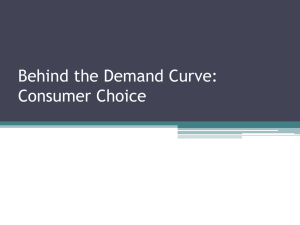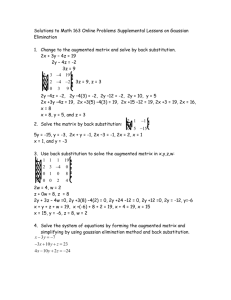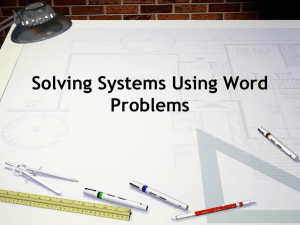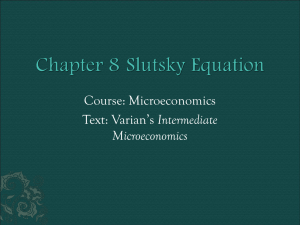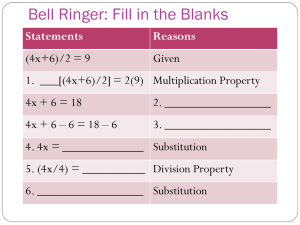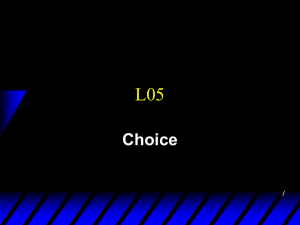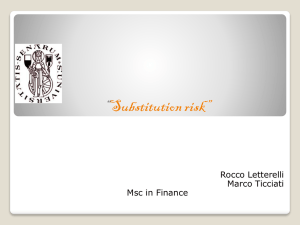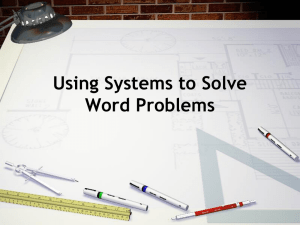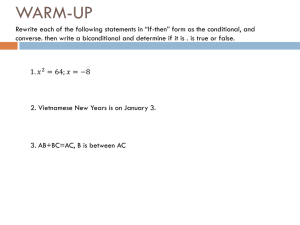Consumer behaviour
advertisement
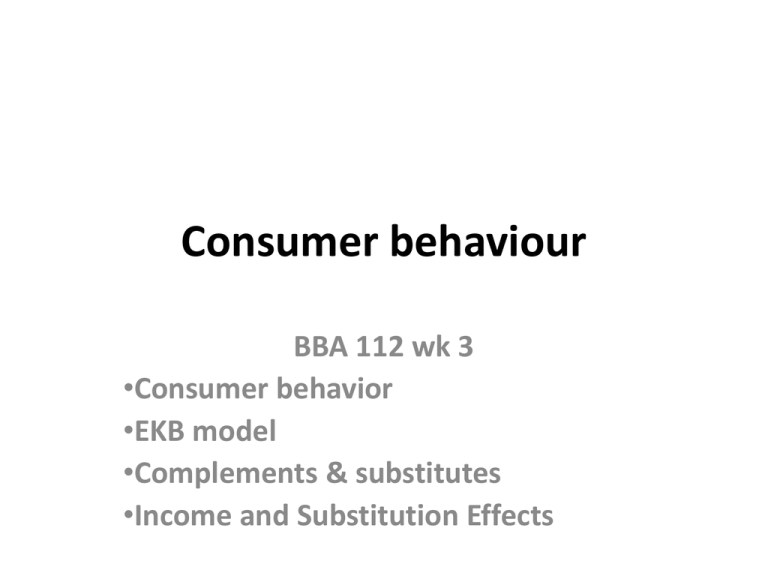
Consumer behaviour BBA 112 wk 3 •Consumer behavior •EKB model •Complements & substitutes •Income and Substitution Effects Consumer behaviuor • referred to as the study of when, why, how, where and what people do or do not buy products. • It blends elements from psychology, sociology, social psychology, anthropology and economics. • It attempts to understand the buyer decision making process, both individually and in groups. • It studies characteristics of individual consumers such as demographics and behavioural variables in an attempt to understand people's wants. • It also tries to assess influences on the consumer from groups such as family, friends, reference groups, and society in general. • Customer behaviour study is based on consumer buying behaviour, with the customer playing the three distinct roles of user, payer and buyer. • Relationship marketing is an influential asset for customer behaviour analysis as it has a keen interest in the re-discovery of the true meaning of marketing through the re-affirmation of the importance of the customer or buyer. • A greater importance is also placed on consumer retention, customer relationship management, personalisation, customisation and one-to-one marketing. • Social functions can be categorized into social choice and welfare functions. • Each method for vote counting is assumed as a social function but if Arrow’s possibility theorem is used for a social function, social welfare function is achieved. Basic model of consumer decision making also refered to as EKB model (Engel, Kollat & Blackwell, 1969) Problem recognition • Problem recognition is that result when there is a difference between one's desired state and one's actual state. Consumers are motivated to address this discrepancy and therefore they commence the buying process. • Sources of problem recognition include: • An item is out of stock • Dissatisfaction with a current product or service • Consumer needs and wants • Related products/purchases • Marketer-induced • New products • The relevant internal psychological process that is associated with problem recognition is motivation. • A motive is a factor that compels action. Belch and Belch (2007) provide an explanation of motivation based on Maslow's hierarchy of needs and Freud's psychoanalytic theory. Information Search • Once the consumer has recognised a problem, they search for information on products and services that can solve that problem. Belch and Belch (2007) explain that consumers undertake both an internal (memory) and an external search. • Sources of information include: • Personal sources • Commercial sources • Public sources • Personal experience • The relevant internal psychological process that is associated with information search is perception. • Perception is defined as 'the process by which an individual receives, selects, organises, and interprets information to create a meaningful picture of the world' • The selective perception process Stage Description Selective exposure consumers select which promotional messages they will expose themselves to. • Selective attention consumers select which promotional messages they will pay attention to Selective comprehension consumer interpret messages in line with their beliefs, attitudes, motives and experiences Selective retention consumers remember messages that are more meaningful or important to them • You should consider the implications of this process on the development of an effective promotional strategy. • First, which sources of information are more effective for the brand and second, what type of message and media strategy will increase the likelihood that consumers are exposed to our message, that they will pay attention to the message, that they will understand the message, and remember our message. Information evaluation • At this time the consumer compares the brands and products that are in their evoked set. • How can the marketing organization increase the likelihood that their brand is part of the consumer's evoked (consideration) set? • Consumers evaluate alternatives in terms of the functional and psychological benefits that they offer. • The marketing organization needs to understand what benefits consumers are seeking and therefore which attributes are most important in terms of making a decision. Purchase decision • Once the alternatives have been evaluated, the consumer is ready to make a purchase decision. • Sometimes purchase intention does not result in an actual purchase. • The marketing organization must facilitate the consumer to act on their purchase intention. • The provision of credit or payment terms may encourage purchase, or a sales promotion such as the opportunity to receive a premium or enter a competition may provide an incentive to buy now. • The relevant internal psychological process that is associated with purchase decision is integration. Postpurchase evaluation • The EKB model was further developed by Rice (1993) which suggested their should be a feedback loop, Foxall (2005) further suggests the importants of the post purchase evaulation and that the post purchase evaluation. Price consumption curve • See separate page: Changes in Price: Complements, substitutes. Substitution and Income Effects • Substitutes & Complements: • Two goods are considered complements if an increase (decrease) in the price of one leads to a decrease (increase) in the quantity demanded of the other (Ex: gasoline and motor oil) • If two goods are independent, then a change in the price of one good has no effect on the quantity demanded of the other (Ex: price of chicken and price of airplane tickets) • Two goods are considered substitutes if an increase (decrease) in the price of one leads to an increase (decrease) in the quantity demanded of the other (Ex: movie tickets and video rentals) Substitutes & Complements • If the price consumption curve is downwardsloping, the two goods are considered substitutes • If the price consumption curve is upwardsloping, the two goods are considered complements • They could be both Income and Substitution Effects • A change in the price of a good has two effects: – Substitution Effect – Income Effect • Substitution Effect – Relative price of a good changes when price changes – Consumers will tend to buy more of the good that has become relatively cheaper, and less of the good that is relatively more expensive • Income Effect – Consumers experience an increase in real purchasing power when the price of one good falls Income and Substitution Effects • Substitution Effect – The substitution effect is the change in an item’s consumption associated with a change in the price of the item, with the level of utility held constant – When the price of an item declines, the substitution effect always leads to an increase in the quantity demanded of the good Income and Substitution Effects • Income Effect – The income effect is the change in an item’s consumption brought about by the increase in purchasing power, with the price of the item held constant – When a person’s income increases, the quantity demanded for the product may increase or decrease • Income Effect – Even with inferior goods, the income effect is rarely large enough to outweigh the substitution effect

